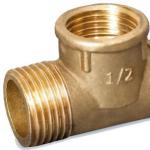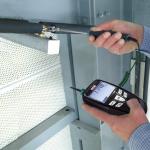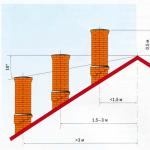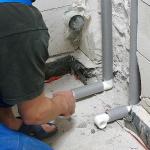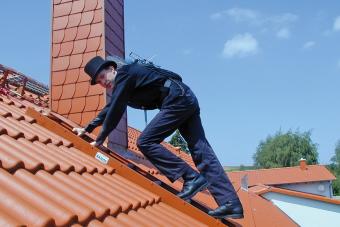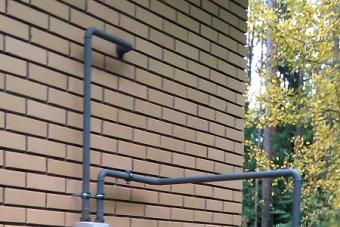Cleaning the chimney pipes and the boiler furnace, of course, is not so attractive, but it is strictly necessary to extend the life of the heater and increase its efficiency.
Why it is necessary to monitor the condition of the smoke channels and clean the chimney in a timely manner
- The condition of the chimney determines the safety of the occupants. Unlike smoke, which, when entering the room, is clearly visible and smells characteristic, carbon monoxide is transparent, odorless, but its toxic effect on the human body can be lethal.
- The condition of the chimney determines the quality of the fireplace or stove. To ensure high-quality traction, the pipe clearance must have an area greater than a certain calculated value. It is obvious that the area of the lumen of the channel, "overgrown" with soot, will gradually decrease and reduce the traction force. The clearance, having reached a certain critical value, will not allow the fireplace to work normally.
- The walls of the chimney begin to collapse due to chemical reactions and the temperature factor. Soot makes it impossible to see and take timely measures to eliminate cracks and defects that appear on the walls of the chimney channel.
- The walls of the exhaust duct for good traction should warm up, and the soot that has settled on the walls prevents this and significantly extends the warm-up time of the chimney.
- Burning soot inside the duct can cause sparks and flames, which may cause a fire.
- In addition to soot, foreign objects can get into the hood– debris from the street, small branches, etc., which can interfere with even ideal operation. Therefore, even with strict adherence to the rules of the furnace, it is necessary to regularly revise the condition of the pipe.
How to clean the chimney pipe: cleaning the chimney from soot using folk methods

There are many options for cleaning the chimney, but you need to choose, of course, a proven method of cleaning. The fight against soot has been going on for centuries, and little secrets are passed down from generation to generation on how to clean the chimney from soot.
- Sprinkling rock salt on the firewood during burning will help to somewhat prevent the formation of soot.
- A fairly popular traditional chimney cleaner is potato peels. The stove or fireplace is properly heated and poured into the fire at least half a bucket of potatoes, cut into small pieces, or the same number of potato peels. The resulting steam in this case contains starch, which, by softening and decomposing the soot, contributes to its lagging behind the channel walls.
- Aspen logs for cleaning give a good effect. Cleaning the chimney from soot occurs due to high temperatures that cause it to burn. Strong draft, which is formed during the burning of firewood from aspen, takes out ash flakes from the smoke exhaust channel.
- Aspen can be replaced with a birch chimney log. Only first you need to free it from the bark.
- Previously, people used another remedy - turpentine, oil from coniferous trees.
Today, chemical cleaning of chimneys or classic cleaning options are more often used.
How to clean a chimney pipe: a classic of the genre - mechanical cleaning

The chimney sweep is often perceived as a fairy-tale character, however, today his services are quite in demand. He is engaged in mechanical cleaning of the exhaust pipe, which, as a rule, gives excellent results.
How to clean the chimney yourself: tools, technology, safety

Given the effectiveness of mechanical cleaning, it makes sense to at least know how it is done.
Before how to clean the chimney from soot, you should study the technology of work and have at hand chimney cleaning tool:
- ruff- used for round pipes, its diameter should be 20% larger than the diameter of the chimney lumen; it is attached from one end with a carabiner to a metal cable or chain, from the other - a core or a spherical weight is suspended from it;
- brush and scraper - used to clean channels with a square or rectangular section; the brush handle is designed so that additional sections can be added to it, depending on the length of the outlet.
- Metal round heavy core - used to eliminate blockages from collapsed bricks or debris; a spherical core is considered optimal, accounting for approximately 65% of the cross section of the exhaust channel; it is also used as a weighting agent for a ruff.
It should be borne in mind that cleaning from the roof is fraught with potential danger.
- It is recommended to carry out cleaning work on a dry, calm day.
- You must use insurance. It is desirable that in chimney cleaning kit included safety belt. In extreme cases, you should be tied with a rope.
- Stove openings must be closed before starting work to prevent ash from spreading throughout the house. If the fireplace does not have a door, you can hang a damp cloth instead.
- If you can’t get foreign objects out of the pipe, you need to push them down.
- If the thickness of the soot is more than 2 mm, then a major cleaning is carried out, with fewer deposits, you can use folk remedies or a chemical chimney cleaner.
- It is recommended to clean the fireplace with an open hearth from below using a brush with additional handles.
- Upon completion of cleaning, starting from the upper cleaning hole, carefully remove soot from all of them. At the end, they also clean the blower and the main firebox.
- Having finished cleaning, the chimney channel is inspected. Detected cracks and crevices are covered with clay, after which they are painted with water-based paint.
Chemical cleaning of chimneys: prevention and cleaning
Technological progress has not bypassed the chimneys. The modern market offers a chimney soot remover in liquid, powder or solid form. They operate according to the following principle: during combustion, a harmless gas is released from the active component, which decomposes combustion products that can form soot and thus prevents the formation of deposits on the walls of the flue ducts.
A device for cleaning chimneys can take the form of, say, tablets, logs or special briquettes.
Among these compositions, the following can be noted.
 "Log-chimney sweep" - it is used for regular prevention of wall deposits. The "log" for cleaning the chimney consists of coal wax, ammonium sulfate, zinc chloride, phosphorus oxide, amorphous silica and other components that prevent the formation of soot and, conversely, help to remove soot.
"Log-chimney sweep" - it is used for regular prevention of wall deposits. The "log" for cleaning the chimney consists of coal wax, ammonium sulfate, zinc chloride, phosphorus oxide, amorphous silica and other components that prevent the formation of soot and, conversely, help to remove soot.
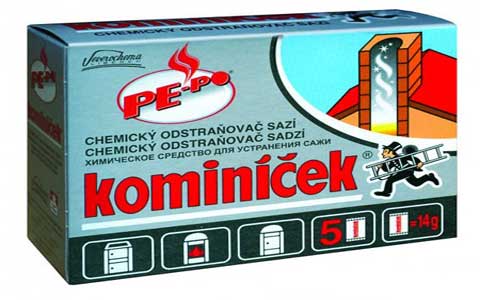 "Kominichek" - the active component in its composition is copper chloride. The composition is quite effective, especially if the thickness of the soot layer is not more than 2 mm. However, chlorine-containing mixtures can adversely affect human health, so the room must be constantly ventilated.
"Kominichek" - the active component in its composition is copper chloride. The composition is quite effective, especially if the thickness of the soot layer is not more than 2 mm. However, chlorine-containing mixtures can adversely affect human health, so the room must be constantly ventilated.
When buying this or that chemical agent, you need to carefully read the instructions or consult with the seller, since not every product is universal and may not be suitable for a particular heater at all.
